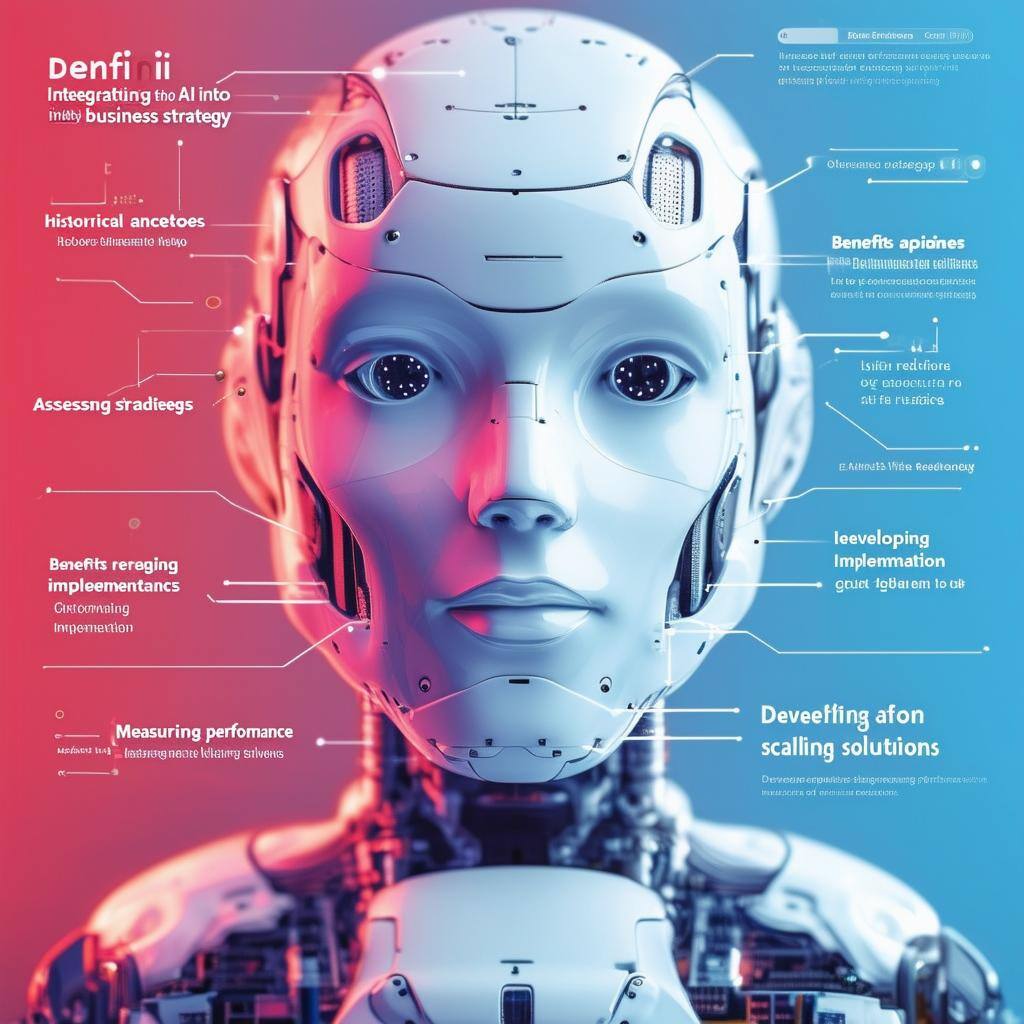Unlocking AI: A Game-Changer for Small Businesses
Artificial Intelligence isn’t just for big corporations anymore. Nowadays, small businesses have access to amazing AI tools that can help them...
4 min read
![]() Totalcare IT
:
Nov 25, 2024 2:14:00 PM
Totalcare IT
:
Nov 25, 2024 2:14:00 PM
Artificial Intelligence (AI) might sound like something out of a sci-fi movie, but it’s a game-changer for businesses of all sizes, especially small to medium-sized enterprises (SMBs). While often linked to tech giants, AI offers a treasure trove of benefits that can help SMBs become more competitive and agile. Let’s dive into how AI can transform your business in surprising ways!
A Quick Overview
Artificial Intelligence is all about machines mimicking human intelligence. This includes various technologies like machine learning (ML), natural language processing (NLP), and robotics. ML helps systems learn from data and improve over time, while NLP allows machines to understand and respond to human language. Robotics brings automation to tasks that humans typically handle.
Key Concepts to Know
To get the most out of AI, it helps to understand a few key ideas:
- Algorithms: These are sets of rules that guide a machine’s learning process.
- Neural Networks: These models are inspired by the human brain and help AI recognize patterns.
- Deep Learning: A more advanced form of ML that uses large neural networks to tackle complex tasks.
Adoption Across Industries
AI is making waves across various sectors. In finance, for instance, it analyzes market trends and spots fraudulent activity. In healthcare, AI aids in diagnosing illnesses and customizing treatments. This widespread use underscores AI's versatility and its vital role in fostering innovation.
Benefits for SMBs
For SMBs, AI levels the playing field against larger competitors. While it may seem daunting, many accessible solutions are tailored for smaller enterprises. The impact of AI can enhance efficiency, boost customer satisfaction, and elevate overall business performance.
Personalization Like Never Before
AI shines when it comes to personalizing customer interactions. By analyzing data, AI can provide tailored recommendations, ensuring each customer feels valued. For example, AI can suggest products based on past purchases, boosting engagement and sales.
A Real-World Example:
In 2011, Netflix transformed its user experience with an AI-driven recommendation system. By analyzing viewing habits, it provided personalized content suggestions, significantly enhancing user satisfaction and retention. This illustrates how AI can elevate customer interactions for all businesses.
24/7 Support with Chatbots
AI chatbots can handle a variety of customer inquiries in real-time, offering immediate support while freeing up human agents for more complex issues. They can manage routine questions, process transactions, and share product info, continually learning and improving along the way.
Automating Routine Tasks
One of AI's standout benefits is its ability to automate repetitive tasks. This reduces human error and allows your team to focus on strategic, creative work. For example, AI can automate data entry, invoicing, and customer follow-ups, streamlining operations for greater efficiency.
Another Success Story:
In the early 2000s, IBM’s Watson transformed customer service by automating responses to common queries, significantly lightening the load for human representatives. For SMBs, similar tools can enhance productivity and operations.
Optimizing Workflows
AI can also analyze workflows to spot inefficiencies and suggest improvements. For example, it can optimize supply chains by predicting demand and adjusting inventory levels, minimizing waste and maximizing resources.
Predictive Analytics for Better Decision-Making
AI empowers businesses to utilize predictive analytics, which analyzes historical data to forecast future trends. By leveraging this insight, you can make informed decisions and develop strategies that align with upcoming market needs.
A Notable Example:
In 2012, Target used predictive analytics to identify expectant mothers through their shopping patterns. This allowed them to tailor marketing efforts, resulting in increased sales and engagement. It shows how predictive analytics can guide strategic decision-making.
Creating Data-Driven Strategies
With AI’s ability to quickly analyze large datasets, businesses can develop informed strategies for marketing, pricing, and exploring new market opportunities.
Accelerating Research and Development
AI can speed up R&D by sifting through vast amounts of data to identify patterns and insights. This leads to faster innovation cycles and the development of new products or services.
A Case in Point:
Pharmaceutical companies have harnessed AI for drug discovery. In 2016, IBM Watson analyzed clinical trials to speed up the identification of cancer treatment candidates, showcasing AI's transformative potential across industries.
Enhancing Creativity
AI can also boost creativity by generating new ideas and solutions. For example, AI algorithms can analyze trends and propose innovative approaches to product design or marketing, fostering a culture of creativity in your organization.
Detecting Fraud Like a Pro
AI’s capability to analyze transaction patterns and identify anomalies makes it a powerful tool for fraud detection. By spotting unusual behaviors, it helps prevent fraud and safeguard sensitive information.
A Success Story:
In 2013, PayPal implemented an AI fraud detection system that significantly reduced fraudulent transactions. By analyzing patterns in real time, it safeguarded user accounts, demonstrating AI’s role in improving risk management.
Proactive Maintenance
AI can also predict equipment failures before they happen, allowing for proactive maintenance. This minimizes downtime and prolongs equipment lifespan, leading to cost savings and operational efficiency.
Finding Areas for AI Integration
Start by identifying where AI can add value. Look for repetitive, data-heavy processes or areas where predictive insights could make a big difference. For instance, AI can enhance customer service or optimize supply chain management.
Setting Clear Goals
Define your objectives for AI projects. Clear goals will guide your strategy and help measure success. If improving customer retention is a priority, you might use AI to analyze feedback and personalize marketing efforts.
Evaluating Solutions
Select AI tools that fit your business needs. Consider scalability, ease of use, and how well they integrate with your existing systems. Popular options for SMBs include Salesforce Einstein for CRM, Google Cloud AI for ML, and Microsoft Azure AI.
Picking the Right Vendor
When selecting AI vendors, check their track record and support services. A reliable vendor can provide valuable guidance throughout your AI journey.
Smooth Integration with Current Systems
Make sure your AI solutions integrate well with your existing technology. This might involve developing custom APIs or using middleware to connect everything. Effective integration is key to maximizing AI benefits.
A Great Example:
In 2018, Starbucks integrated AI into its mobile app to offer personalized recommendations. This seamless integration enhanced the customer experience and boosted engagement.
Training Your Team
Ensure your team is ready to embrace AI. Provide training to help employees understand and effectively use these new tools. Successful adoption involves not just implementing technology but also fostering a culture of data-driven decision-making.
Inspiring Examples
Look at businesses that have successfully integrated AI. For instance, Sephora uses AI for personalized beauty recommendations, while small e-commerce businesses utilize AI for dynamic pricing and inventory management.
Takeaways for Your Strategy
Analyze what worked for these companies—aligning AI projects with business goals, investing in data quality, and building a skilled team are key lessons to consider.
Common Roadblocks
Challenges during AI adoption often include data quality issues and integration difficulties. Addressing these requires careful planning and effective communication with your team.
Best Practices to Overcome Challenges
Mitigate risks by investing in data preparation, selecting appropriate AI models, and ensuring smooth integration. A clear strategy and expert guidance can make all the difference in your AI implementation.
By embracing the power of AI, you can propel your business forward, enhancing efficiency, innovation, and overall success. Let’s get started on this exciting journey!

Artificial Intelligence isn’t just for big corporations anymore. Nowadays, small businesses have access to amazing AI tools that can help them...

Artificial Intelligence (AI) has swiftly transitioned from a futuristic concept to a transformative force reshaping industries across the globe. For...

Staying ahead in business often means embracing cutting-edge technologies. New tools can unlock new avenues for growth. Especially for small...